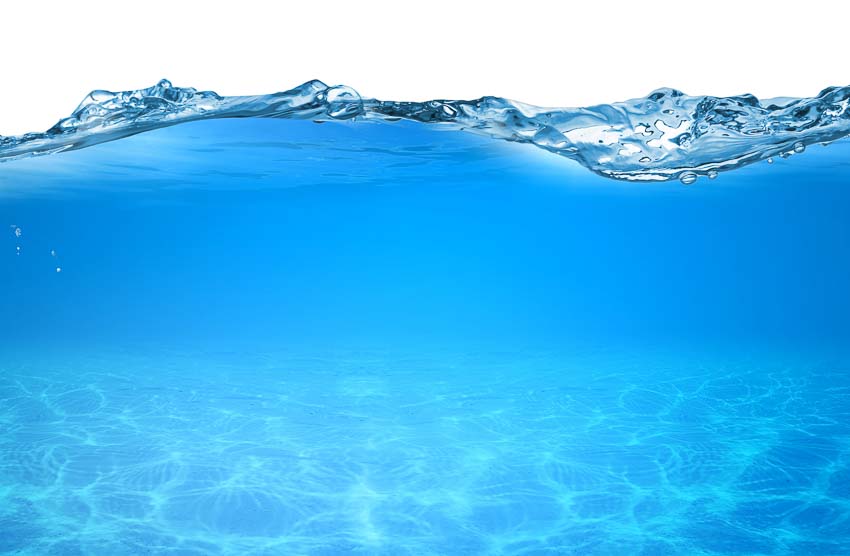Saltwater pools have been available in the United States since the 1980s, but there’s been a recent surge in their popularity. That’s because saltwater pools are better for your skin and hair, and handling salt is easier than dealing with chlorine. Discover everything you need to know about saltwater pool systems and the pros and cons of owning one.
Saltwater Pools: An Introduction
If you’re considering switching from a traditional chlorine-sanitized pool to a saltwater pool, this guide provides the information and resources you need to help you make the right choice. Learn more about what it is and how it works.
What is a Saltwater Pool?
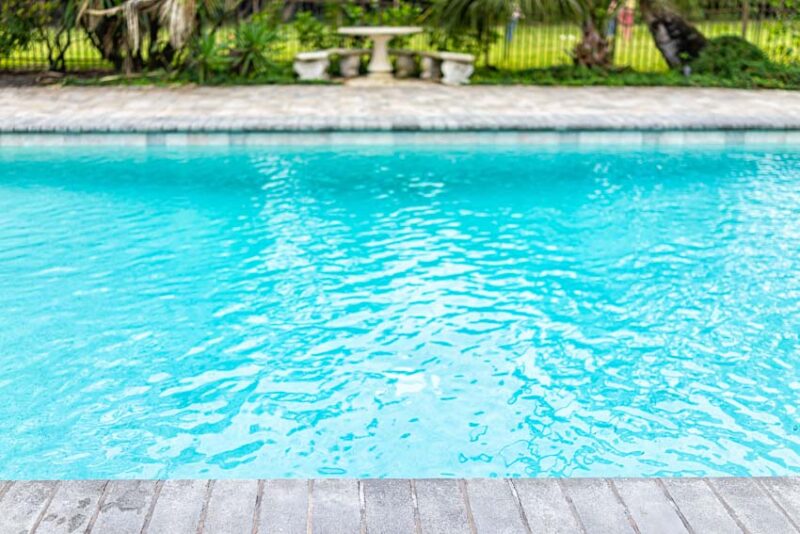
Saltwater pools use a chlorine generator to convert salt to chlorine. The result is softer, gentler water that’s easier on your eyes, skin, hair, and clothes.
In traditional swimming pools, chlorine is added to the pool water to kill germs. However, when it combines with the body waste of swimmers, including sweat and urine, chloramines form.
Chloramines give off a gas that irritates people’s eyes and respiratory systems.
In saltwater systems, the chlorine generator constantly generates chlorine, so you don’t need large amounts of chlorine to disinfect your water. Even though there is still chlorine in your pool, there is less of it at once, making the water easier on your skin and clothes.
With saltwater pools, there are rarely any detectable odors or chlorine smells, and there isn’t any need for handling, storing, and transporting chlorine. You also don’t have to worry about the taste of salt.
That’s because they only have about 3,000 ppm, compared to ten times that amount in ocean water.
How Does a Saltwater Pool Work?
Instead of adding chlorine to disinfect your pool water, a saltwater pool uses dissolved salt, which can be poured directly into the pool’s deep end. The water is then pumped into the chlorine generator.
When the salt water enters the chlorine generator, it passes through a cell with metal blades coated with ruthenium or iridium. Inside the chlorine generator cell, a low-voltage electrolytic shock creates a reaction that splits the sodium chloride into different ions, resulting in chlorine gas.
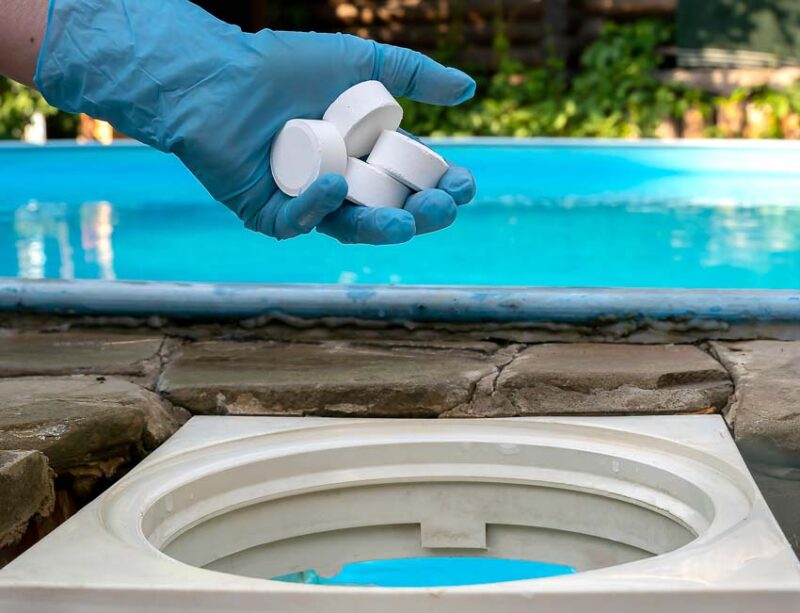
There are many different forms of chlorine, and different types of pools use various chlorine compounds to disinfect the water. When chlorine gas comes out of the saltwater generator, it dissolves in the pool water. This creates hypochlorous acid, a powerful disinfectant that kills bacteria, viruses, and fungi.
Advantages of a Saltwater Pool
People who use saltwater pools love how it makes their skin feel, but their advantages don’t end there. Learn more about their health benefits and cost advantages.
Health and Comfort Benefits
If you’ve ever spent most of the summer in a chlorinated pool, you understand its effects on your skin, hair, and nails. Chlorinated pool water damages the skin’s protective barrier, leaving it vulnerable to skin irritations, allergies, and infections.
Conversely, most people report their skin feeling soft and supple after swimming in a saltwater pool. Even though there is chlorine in the pool, it’s not present in large amounts. Plus, salt water acts as a natural exfoliant and moisturizer and can cure eczema, psoriasis, and acne.
Saltwater pools also contain more bromide, which alleviates joint pain. Soaking in a saltwater pool or hot tub is great for people with injuries and everyday aches and pains.
Cost and Maintenance Advantages
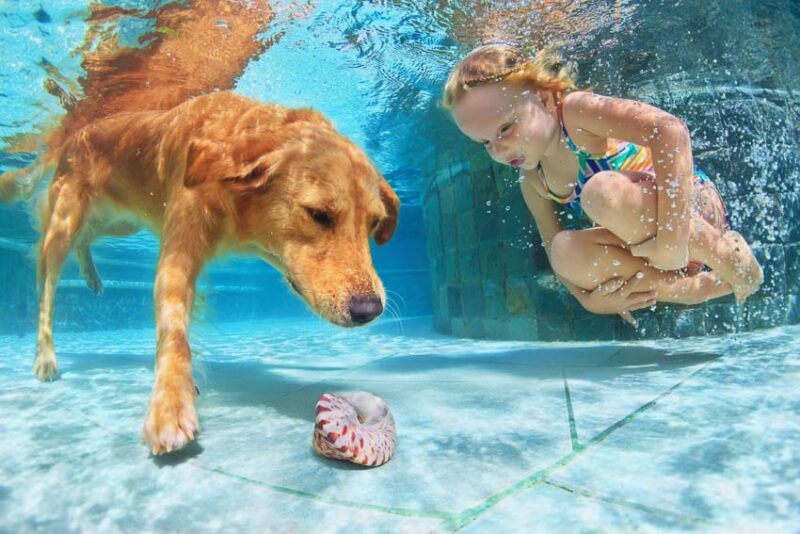
Saltwater pools have a higher upfront cost, but you’ll spend less on salt than on chlorine. The average cost of salt and chemicals ranges from $70 to $100 per year. With chlorinated pools, the costs are closer to $300 to $800 per year.
There are other advantages of using salt to disinfect your pool. Salt is easier to find, and it isn’t dangerous, so you don’t have to worry about pets and small children getting into it. It’s also much easier and safer to transport than chlorine.
Saltwater pools are better in many respects. A huge advantage is that you won’t need an algaecide.
In fact, since many types of algaecides use metals like copper as their active ingredient, they can damage your chlorine generator.
Disadvantages of a Saltwater Pool
Saltwater pools have more advantages than drawbacks, but it’s important to know the good and the bad when making decisions that cost a lot of money.
Initial Installation Costs
The higher upfront cost is one of the biggest drawbacks. The disinfection system is the main difference in the costs between chlorine and saltwater. Setup for a chlorine pool disinfection system is $100 to $400, while a saltwater system cost can be as high as $2,500.
Whether you’re building a saltwater pool from scratch or converting an existing pool to a saltwater disinfection system, other installation costs are associated with making your pool safe from the corrosive nature of salt water.
Potential Corrosion and Maintenance Issues
Because salt is corrosive, one of the most significant drawbacks of saltwater pools is the potential for corrosion of metals. Pumps, filters, ladders, and handrails are especially subject to corrosion, so some installers require a release of liability to install them.
Other types of equipment susceptible to corrosion in such pools include heaters, liners, masonry, and lighting systems. If you’re converting to saltwater, you may need a professional to help you replace these items.
Proper maintenance is essential no matter what type of pool you have, and with a saltwater pool, you need to ensure that salt levels are maintained in addition to other chemicals. If you’re negligent, repairing or replacing your chlorine generator can cost you a lot of money.
Other Issues with Saltwater Pools
Since there is still some chlorine in a saltwater pool, you won’t be able to escape the effects of chlorine altogether. You may notice a chlorine smell occasionally, and you still need to watch for eye and lung irritation.
Bleached swimsuits, towels, and pool covers can still be problematic. However, chlorine levels in a saltwater pool are far lower than in a traditional swimming pool. This minimizes the negative effects.
Converting a Chlorine Pool to a Saltwater Pool
You can make saltwater pool conversions to any type of pool, including in-ground and above-ground pools and hot tubs. Going from chlorine to saltwater is very straightforward.
And even though you might be hesitant, there are many reasons to make the switch. In some cases, it’s so easy that you can do it yourself in less than an hour.
Steps for Conversion
The biggest question on most people’s minds is how much converting a chlorine pool to a saltwater pool costs. On average, people pay between $800 and $2,500 to convert their pools to saltwater. This depends on the pool size and any other work that you may have to do.
Of course, you can save money by converting your pool to saltwater yourself, and it’s much more DIY friendly than most people realize. All you need are common tools and a basic understanding of plumbing and electrical systems.
Step 1–Choose the Right System
Choose the right saltwater system for your pool based on your climate, pool size, and the number of people that use your pool.
Step 2–Install the Chlorine Generator
Converting your pool to a saltwater system is basically an add-on installation, and you don’t need to drain the pool to do it.
Install the saltwater generator before the return valve to the pool. It should be in line right after the pump, filter, and heater. That’s so the chlorinated water leaving the generator has already been filtered.
All you need to do is cut the PVC pipe, install the chlorine generator, and connect it to power. Most units plug directly into a receptacle, which you should already have nearby for the other components.
Wait to turn it on until after the next step.
Step 3–Add salt
Now that you have a saltwater generator installed, you must add salt to your pool. Turn on the pump and add the salt directly to the pool water at the deep end of the pool. If it piles up on the bottom, you can use a brush to help dissolve it.
Your generator should have instructions that tell you how much salt to use for your pool size. Moreover, most generators have an easy-to-read display that tells you the salt level. Since the salt stays in the water, you only have to add about 10% of the total salt per year to keep it topped off.
Key Considerations During Conversion
The salt level needs to be between 2700 and 3400 ppm before you turn the chlorinator on. After adding salt, test the water and add more salt if necessary.
Saltwater generators work best when the water temperature is at least 60°F (16°C), so if your heater has been off, warm up the pool before starting the saltwater generator.
After installing a chlorine generator, keep your eye on the entire system to ensure it’s working properly, and perform a complete pool water analysis to check chemistry levels, including pH.
Maintaining Your Saltwater Pool
Saltwater pools require maintenance, with daily, weekly, monthly, and seasonal chores. You can hire a professional or DIY your pool maintenance.
Either way, it’s important to stay on top of it to get the most enjoyment out of your pool.
Regular Maintenance Tasks
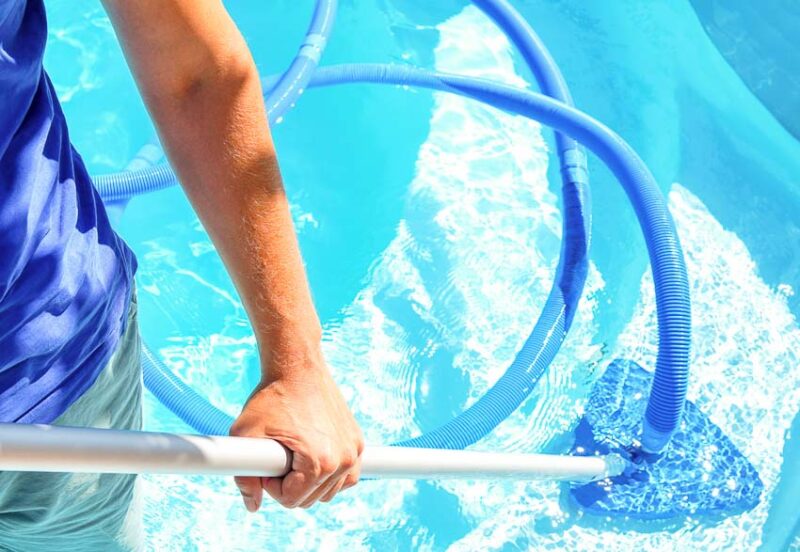
Regular tasks for pool maintenance are critical for keeping the pool clean. There are a variety of daily and weekly chores that need to be done, which you can do yourself or hire a professional pool service.
Pool maintenance tasks can easily take a couple of hours each week. If you plan on doing it yourself, investing in the proper equipment and learning more about pool care routines is important.
Troubleshooting Common Issues
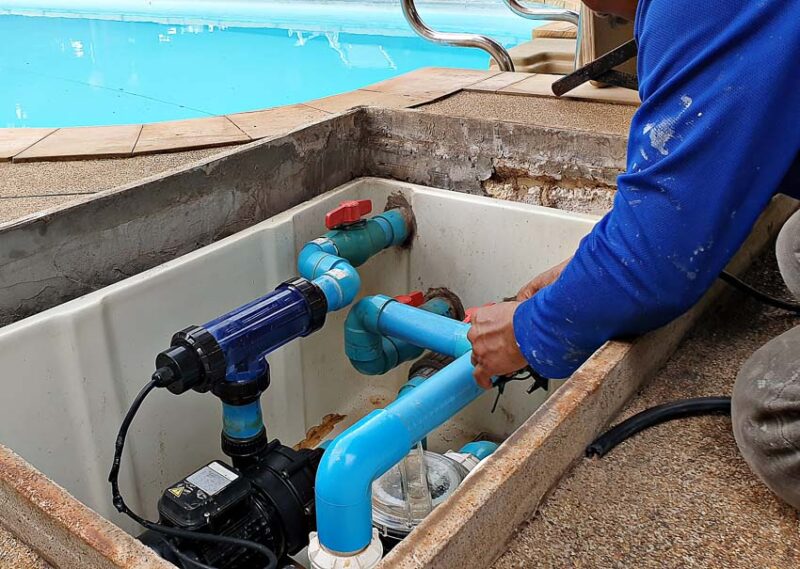
Maintaining a pool isn’t an easy job, and sometimes things go wrong. A few of the most common problems include equipment failure, leaky pipes, cloudy water, poor filtration, and low chlorine levels.
Follow your maintenance schedule, and if you have problems, don’t hesitate to contact a professional to help you troubleshoot your problem.
Saltwater Pool FAQs
Are They Chlorine-Free?
Saltwater pools are not chlorine-free, but they contain less chlorine than traditional pools. A chlorine-generating system converts salt into pure chlorine through electrolysis in these pools. The result is the same: saltwater pools still contain chlorine, but they are gentler on the eyes, skin, and lungs.
How Often Do Saltwater Pools Need to Be Serviced?
Saltwater pools should be serviced at least every six months or more frequently if you live in a warm climate and use your pool frequently.
Can These Pools Damage My Backyard Landscaping?
Even though saltwater can damage plants, there isn’t enough salt in a saltwater pool to damage your grass lawn or landscaping plants.
What is the Lifespan of a Saltwater Pool System?
The average lifespan is about five years, and most systems last anywhere from 3 to 7 years before the salt chlorine generator needs to be replaced. Maintaining a consistent salt level and using the reverse polarity function to clean mineral deposits are a couple of ways to extend the lifespan of your system.
How to Winterize a Saltwater Pool?
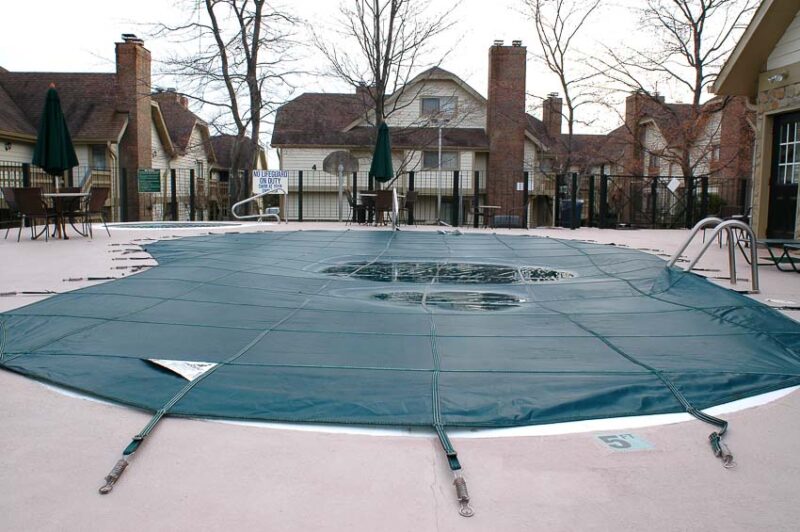
Winterizing a saltwater pool is similar to preparing a chlorine pool for the off-season. Clean your pool, check the salt and pH levels, and add winter chemicals. There is not enough salt in these pools to keep them from freezing.
Therefore, just like with a regular pool, drain it below the skimmers and cover it for the winter. Clean and remove the salt generator and store it indoors.

